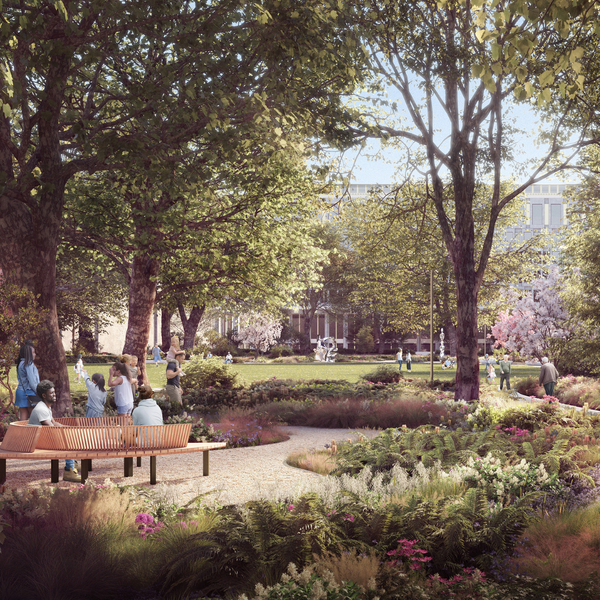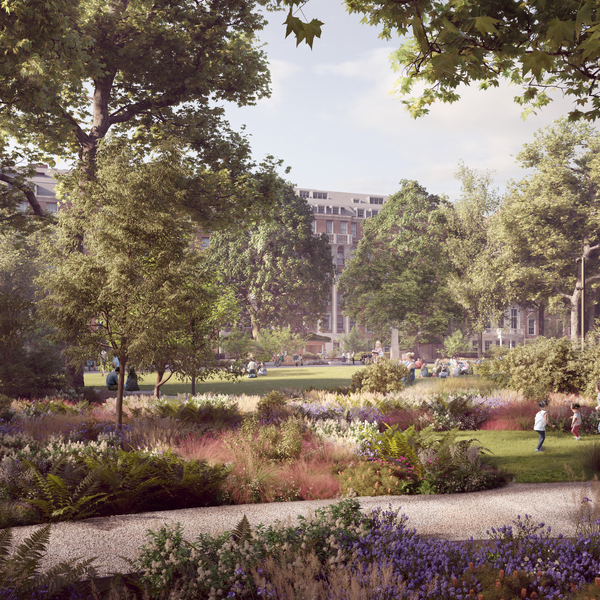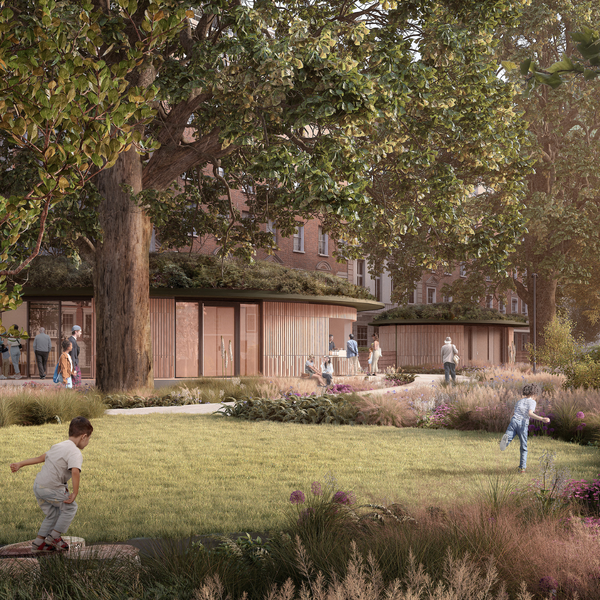Project showcase
Grosvenor Square Gardens, City of Westminster for Grosvenor with BDP, AKTII, Integration, Jackson Coles, Nigel Dunnett, Gary Grant, Tim Moya Associates and Donald Insall Associates
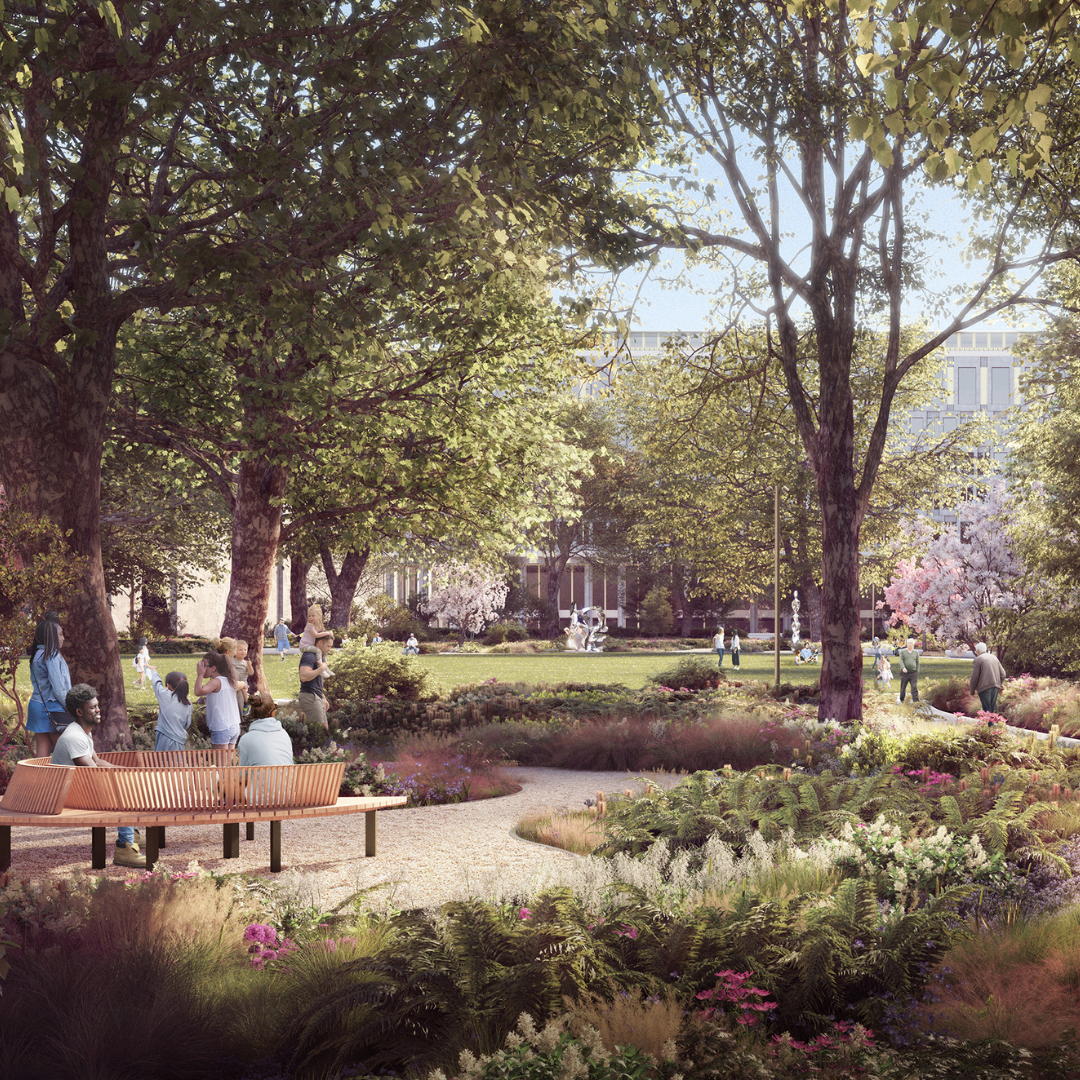
Located in the Mayfair Conservation Area, Grosvenor Square is undergoing a transformation to boost biodiversity by 20 per cent as part of Grosvenor’s green space initiative. The redesign includes adding over 70,000 plants and 44 new trees, and creating wetland areas to diversify habitats. Features include a cafe kiosk, educational classroom, and accessible public toilets. The project saved 131.5 tonnes of CO2 and engaged young people through an eight-month consultation using the Voice Opportunity Power toolkit.
Who is on the project?
Project Manager – Jackson Coles
Landscape Architect & Lead Designer – BDP Stage 2 onwards. (Tonkin Liu Stage 2 Concept)
Architect – BDP Stage 2 onwards (Tonkin Liu Stage 2 Concept)
Structural/Civil Engineer – AKT II
Services Engineer – Integration
Lighting Designer – BDP
Sustainability Consultant – BDP
Cost Consultant – Gardiner and Theobald
Horticulturalist – Nigel Dunnett Studio
Ecologist – Green Infrastructure Company
Arboriculturist – Tim Moya Associates
Heritage Expert – Donald Insall
Soil Science – Tim O’Hare
Principal Designer – Im2
Biodiversity advisor – Greengage
Describe the context of this project, its neighbourhood and community.
Dating back to the 1720s and inspired by Michelangelo’s Capitoline Hill in Rome, Grosvenor Square was the first oval garden square in London. It was an important meeting place for Londoners, envisaged as a ‘Wilderness Worke’- a form of neatly ordered geometric garden for strolling, that brought nature from the countryside into the city, for the wellbeing of city-dwellers. The square has been modified over the centuries, changing the character from a private celebration of horticulture to a public, memorial landscape with two listed monuments alongside a fine example of mid-century modernism in the former US Embassy overlooking the square. With the embassy’s conversion to a hotel underway, the squares role as an increasingly public destination continues. Sat within the Mayfair Conservation Area, this Registered (Grade II) Garden Square is an important public green space in Westminster, providing for local residents, adjacent businesses, embassy and hotel users, and visitors alike. In its current condition the square does not fully meet its historic status or future potential, particularly regarding habitat diversity and amenity provision. Recognising its importance to the West End, and opportunity to meet Grosvenor’s ambitious target to increase biodiversity across its managed green space by 20%, Grosvenor Square is being redesigned, transforming London’s second largest garden square into an extraordinary, biodiverse urban garden with ground-breaking environmental credentials. A new social, historical, and ecological haven within the area and the heart a welcoming and vibrant Mayfair.
Please describe your approach to this future public realm, including its purpose and motivation. How does it knit into, and serve the needs of, the wider area?
As custodians of this public space, Grosvenor’s ambitious brief is to return the square to a world class urban garden for all. Focussing on enhancing the interaction between nature and people, Grosvenor Square will become a green oasis within the West End, designed and governed collaboratively with its neighbours and other London communities. Three distinct character areas include: The central oval lawn and walkway reinforces the square’s unique oval identity and retains a large usable area of open lawn. High quality craftsmanship and natural materials combine along the oval path and feature seating to emphasise the elegant geometry of this central feature. The woodland walk with extensive planting of over 70,000 new plants, diverse seating opportunities and natural play located beneath the canopy of the existing trees. New wetland areas will further diversify habitat types in the area. Two new seedpod shaped pavilions provide the community with café kiosk, educational classroom, accessible public toilets and dedicated gardener’s facilities. Finally, the retained formal boundary edge consisting of refurbished ornate railings and gates, improved and additional pedestrian entries and enhanced mature hedge will strengthen the square’s ability to continue to provide an oasis for people and nature. People of all ages will be able to wander amongst the trees, rest and enjoy recreational activities in a high-quality green space while appreciating the Square’s renewed cultural and horticultural heritage. A new entry improves access, while drinking fountains and baby changing facilities are incorporated which are much needed in Mayfair.
Describe the social impact of the project: How will it contribute to the economic, environmental and social wellbeing of the wider place and its community?
Grosvenor’s multimillion-pound initiative, the most significant private investment in green space in the West End for a generation, is part of a wider strategic investment to ensure Mayfair remains a pre-eminent location to work, shop, and live. The transformation will demonstrate how green spaces in cities can work harder for nature and the wellbeing of those who rely on them. Whilst increasing the biodiversity it will also further urban climate resilience, regulating urban heat island effects and mitigating flood risk. New signage and education centre will facilitate school and community learning about the environment, with new natural play further accommodating children and families in Mayfair. Dedicated art spaces will foster social engagement whilst improved path networks, new accessible access to FDR memorial and a diverse range of seating will ensure an inclusive and welcoming garden for all. Increased community facilities and gardeners’ maintenance will provide 7-8 FTE jobs compared with 3 part time roles today. Alongside this, an increased site presence, new lighting and CCTV will enhance safety for all users, enabling extended opening hours into the night. A CIRIA B£ST assessment estimates a financial benefit of £668,046 worth of avoided health costs over a 40-year period because of the scheme. To ensure the scheme maximises wellbeing, a study was undertaken with LSE to survey the baseline measure of wellbeing of workers and visitors in Mayfair. The research will be repeated three and six years after the completion of the scheme to evidence and inform ongoing wellbeing improvement in Mayfair.
Gallery

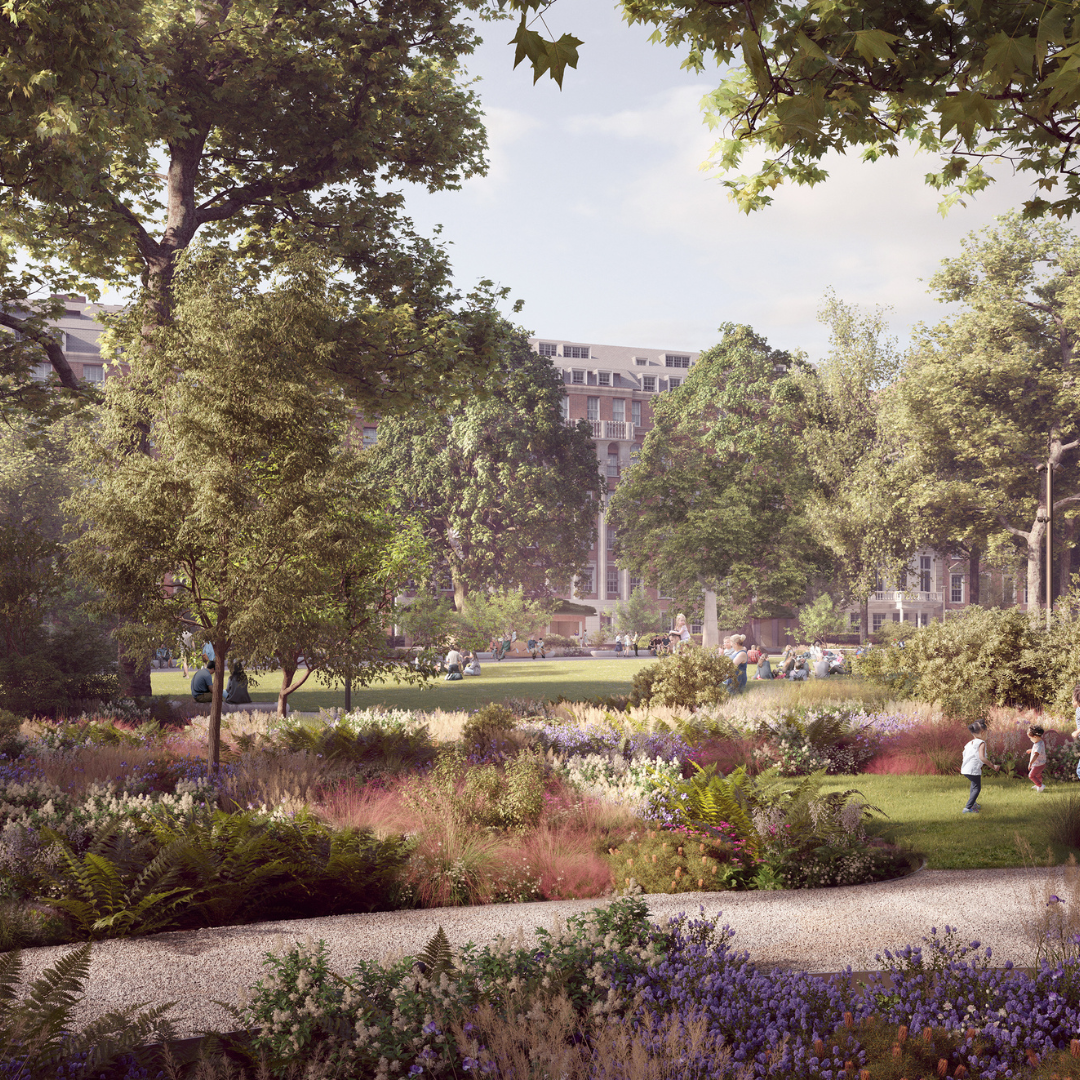
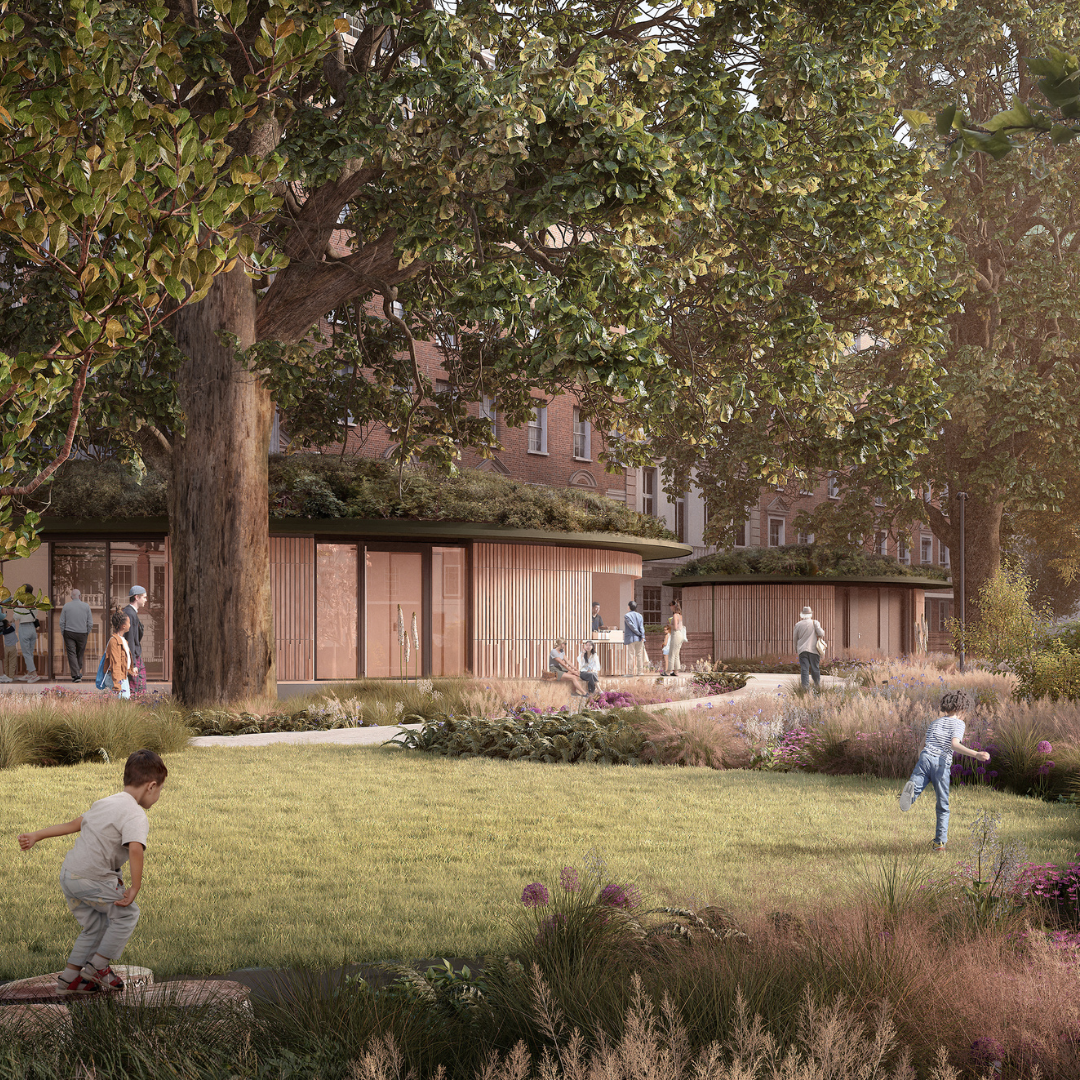
Festival of Pineapples
24-26 February 2026
Pineapples prize giving night
April
Pineapples at Festival of Place
10 June 2026
© The Pineapples - Tweak Ltd. 124 City Road, London, EC1V 2NX. Tel: 020 3326 7238
